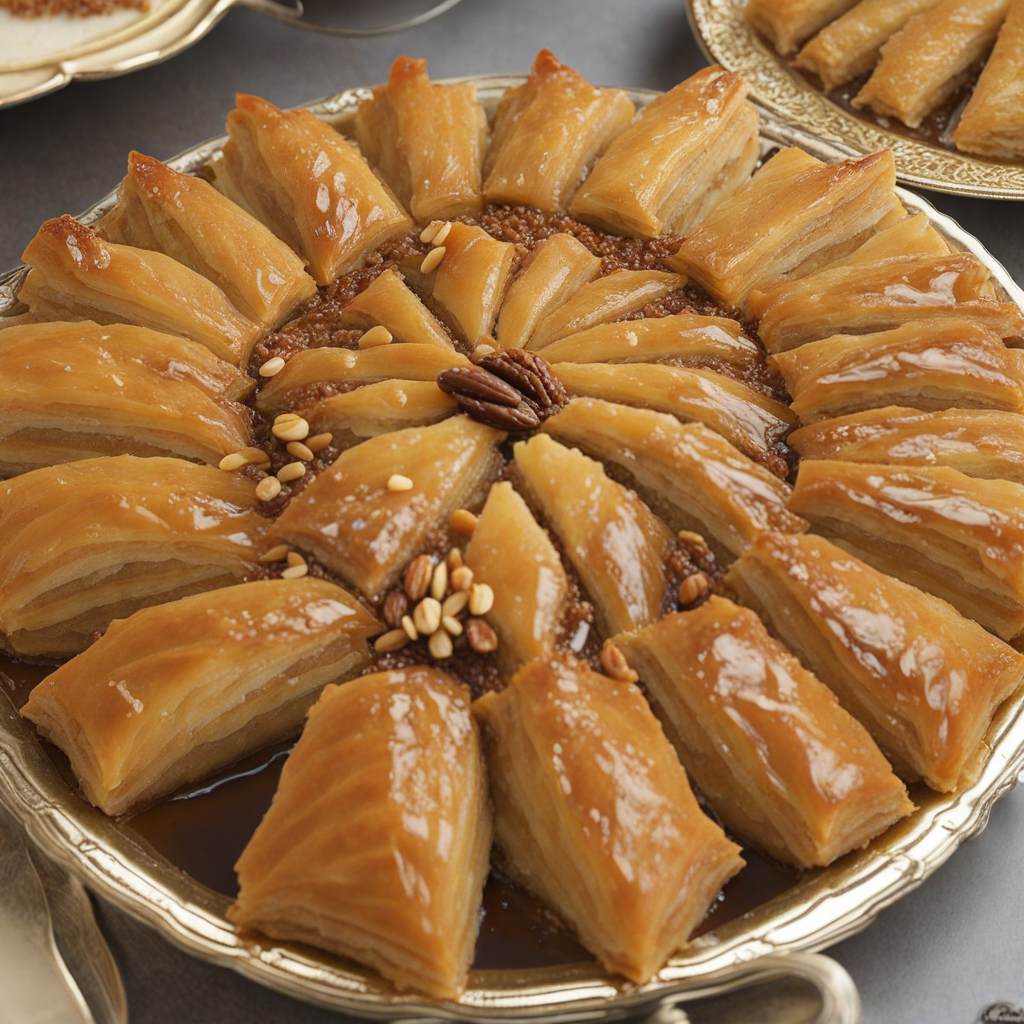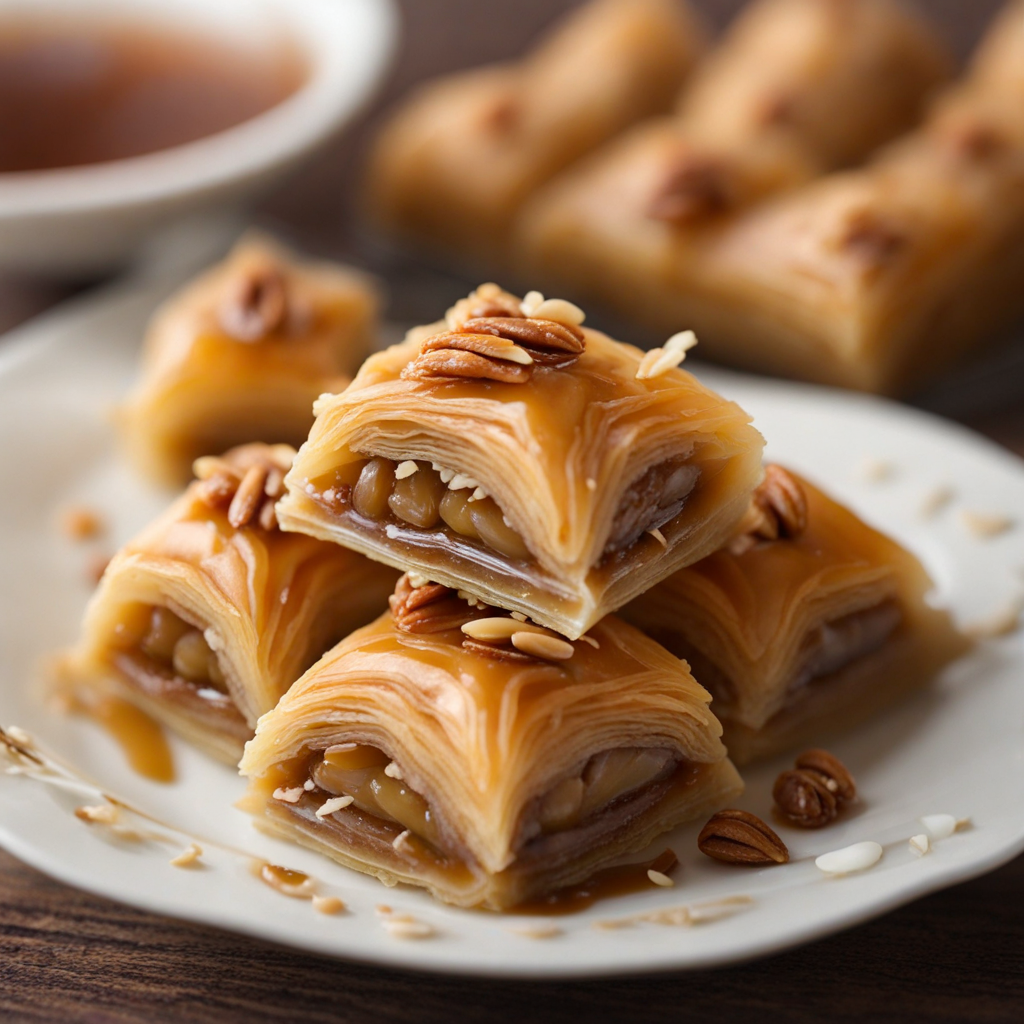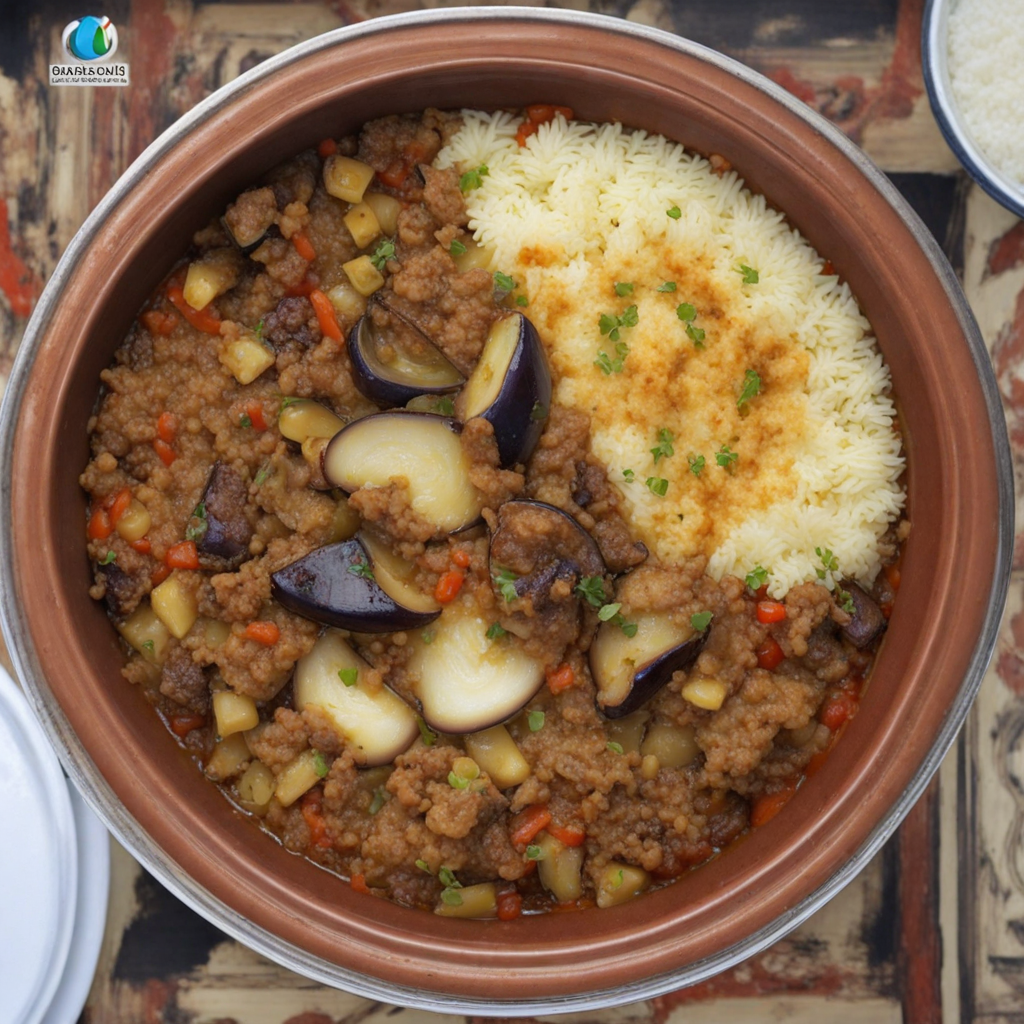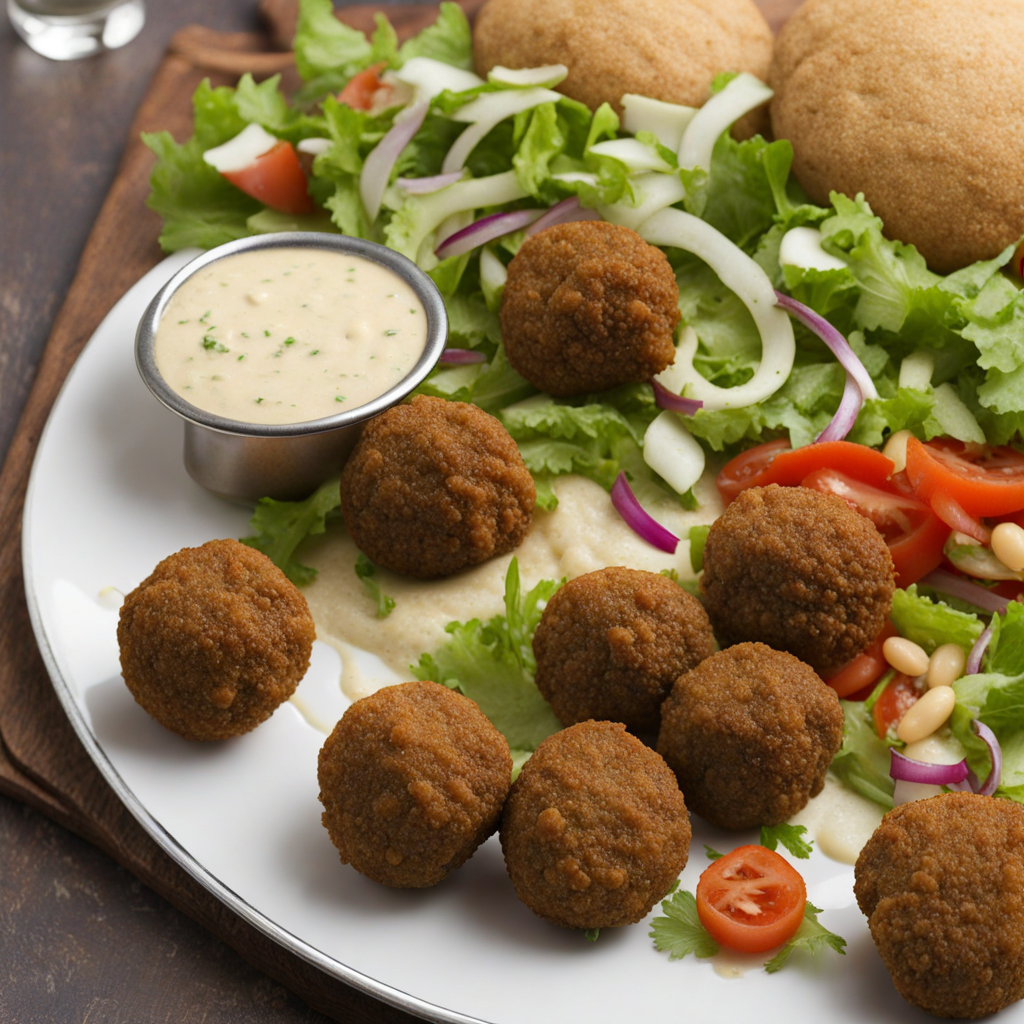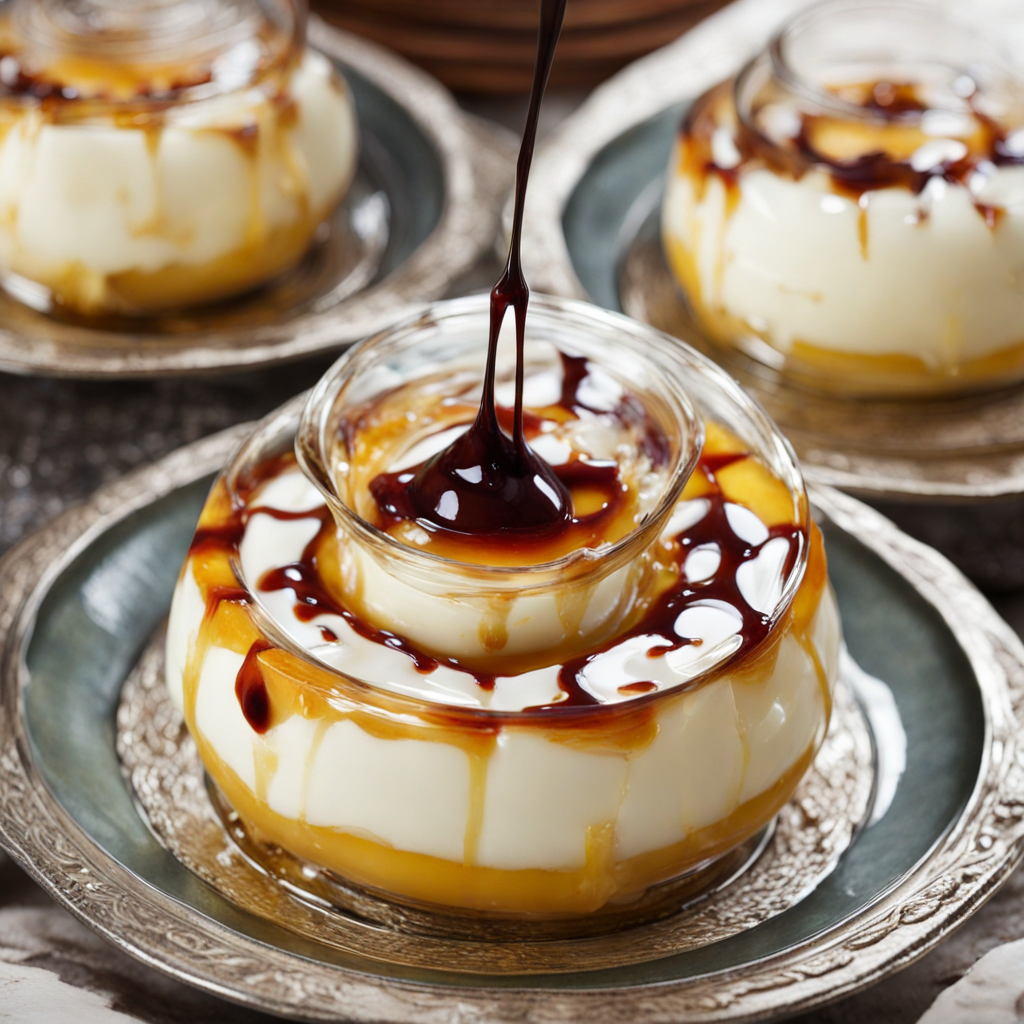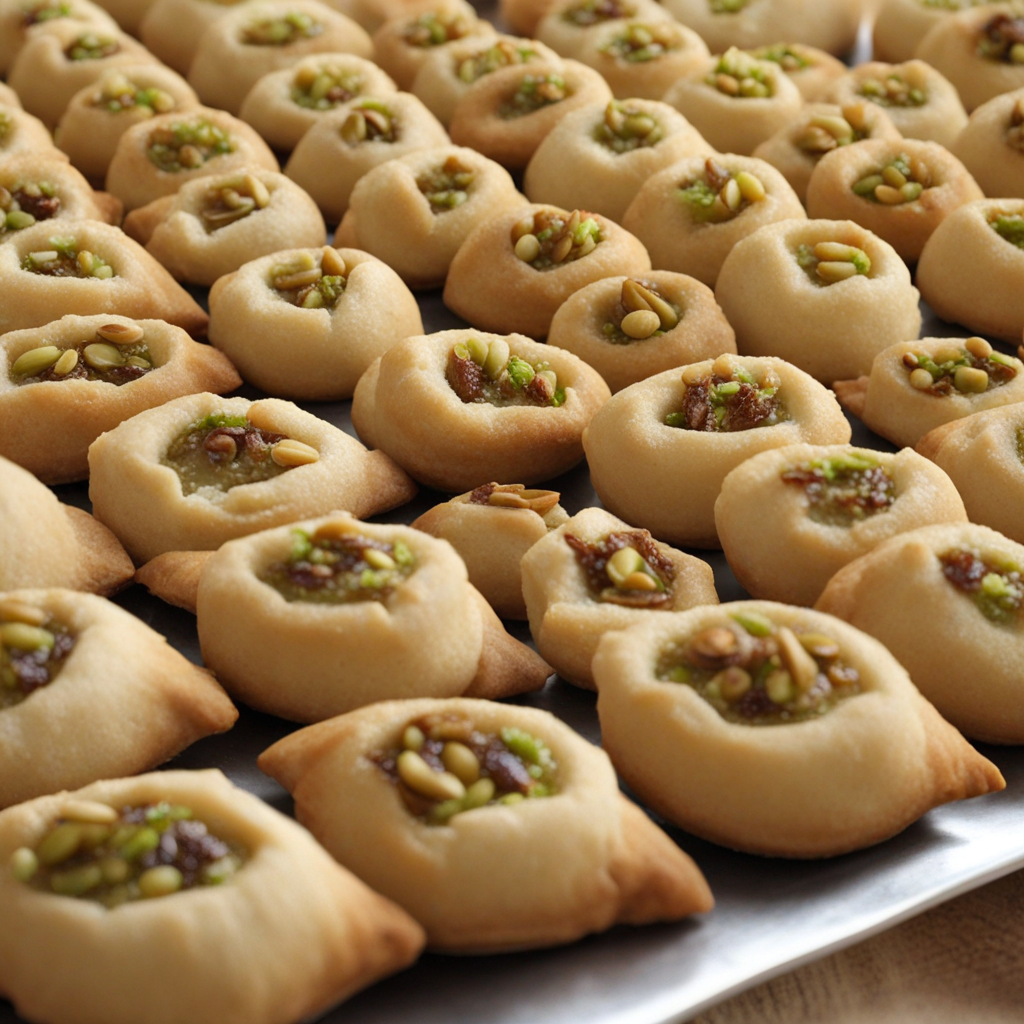Baklava
Baklava is a rich, sweet pastry that has its roots deeply embedded in Middle Eastern cuisine, particularly in Syria. This delightful dessert is made from layers of filo pastry, which are incredibly thin sheets of dough that create a wonderfully flaky texture. Each layer is brushed with melted butter to achieve that perfect golden hue and crispness. The pastry is typically filled with a mixture of finely chopped nuts, such as pistachios, walnuts, or almonds, which add a delightful crunch and nutty flavor to each bite. The combination of the delicate pastry and the hearty filling creates a symphony of textures that is simply irresistible. Once the baklava is assembled, it is cut into diamond or square shapes before being baked to perfection. The magic truly happens when the baklava is removed from the oven and generously drizzled with a warm syrup made from honey, sugar, and a splash of lemon juice or rose water. This syrup seeps into the layers, sweetening the pastry while keeping it moist and enhancing the flavors of the nuts. The result is a sweet treat that balances richness with a hint of floral notes, making it an unforgettable experience for the palate. In Syria, baklava is often enjoyed during special occasions and festive celebrations, symbolizing hospitality and generosity. Each bite transports you to vibrant markets filled with the scents of spices and sweets, and the cultural significance of this dessert adds depth to its enjoyment. Whether served at a family gathering or a wedding, baklava is not just a dessert; it is a celebration of heritage, flavor, and the art of pastry-making that invites everyone to savor its unique taste.
How It Became This Dish
The History of Baklava: A Syrian Delight Baklava, known in Arabic as بقلاوة (baqlawa), is a rich and sweet pastry that has captivated palates across the Middle East, Mediterranean, and beyond. Originating from the lands that would become modern-day Syria, this delectable treat has a storied history, steeped in cultural significance and culinary evolution. #### Origins of Baklava The origins of baklava are a subject of much debate among food historians, with various narratives tracing its roots back to ancient empires. One prevalent theory suggests that the dish originated in the kitchens of the Assyrian Empire around the 8th century B.C. It is believed that Assyrian cooks layered thin bread dough with chopped nuts and honey, a primitive precursor to modern baklava. However, the most widely accepted origins of baklava date back to the Ottoman Empire, which, at its height, spanned across Southeast Europe, Western Asia, and North Africa. The Ottomans were known for their culinary sophistication and their ability to amalgamate the diverse flavors and traditions of the regions they controlled. In this context, baklava evolved into a refined pastry, made with thin layers of dough known as phyllo (or yufka), filled with chopped nuts—often pistachios or walnuts—and sweetened with syrup or honey. The earliest documented recipes for baklava can be traced to the 15th century in Ottoman cookbooks. These recipes showcase the meticulous process of creating baklava, highlighting the labor-intensive nature of rolling out the delicate layers of dough and assembling them with precision. The pastry became a symbol of wealth and hospitality, often served during festive occasions and significant cultural events. #### Cultural Significance In Syrian culture, baklava is more than just a dessert; it is an emblem of generosity and celebration. Traditionally, it is prepared for special occasions such as weddings, religious holidays, and family gatherings. In Syria, baklava is often served alongside Arabic coffee or tea, enhancing its rich flavors and providing a communal experience. The act of sharing baklava symbolizes unity, hospitality, and warmth—core values in Syrian culture. Baklava also holds a special place in Islamic tradition. During Ramadan, the holy month of fasting, it is common for families to break their fast with sweet treats, and baklava is a favored choice. Its rich, sugary profile provides a quick energy boost after a day of fasting, making it a cherished part of iftar meals. The preparation of baklava can also vary significantly from region to region, leading to a rich tapestry of local adaptations. In Syria, the use of spices such as cinnamon or clove in the nut filling adds a distinctive flavor, while some variants include rose water or orange blossom water in the syrup, imparting a fragrant aroma that elevates the dish. #### Development Over Time As baklava traveled beyond the borders of Syria, it underwent several transformations, adapting to local tastes and ingredients. The dish became particularly popular in neighboring countries such as Turkey and Lebanon, each developing its own version. In Turkey, baklava is often made with a higher proportion of pistachios and is frequently cut into diamond shapes, whereas Lebanese baklava may incorporate orange blossom syrup and more varied nuts. The 19th century saw the emergence of baklava as a symbol of national pride in the Ottoman Empire, with different regions claiming their unique variations. The dish became a staple in cafes and restaurants across the empire, further solidifying its status as a beloved treat. The industrial revolution and the advent of mass production in the 20th century also transformed how baklava was made and distributed. While traditional baklava requires a painstaking process of hand-rolling dough and layering, modern techniques and machinery streamlined production, making this once labor-intensive dish accessible to a broader audience. Despite its evolution, the essence of baklava remains unchanged. It continues to be prepared with the same dedication and care that characterized its origin. In Syria, families often uphold the tradition of making baklava from scratch, passing down recipes through generations. The communal aspect of its preparation, where family members gather to assist in rolling the dough and layering the ingredients, preserves not only the culinary heritage but also the bonds of family and friendship. #### Global Popularity In recent decades, baklava has gained international acclaim, becoming a staple in Middle Eastern restaurants and grocery stores worldwide. This global popularity has led to further experimentation and fusion with other cuisines. Chefs have begun to incorporate unconventional ingredients, such as chocolate, into baklava, while others serve it with ice cream, creating a delightful contrast of textures and flavors. The rise of globalization has also facilitated cultural exchange, introducing baklava to new audiences. Food festivals and culinary events often feature baklava as a highlight, showcasing its versatility and appeal. Moreover, social media platforms have played a pivotal role in popularizing baklava, with visually stunning photographs and recipes shared by food enthusiasts and professional chefs alike. #### Conclusion Baklava, or بقلاوة, is more than just a sweet pastry; it is a testament to the rich cultural tapestry of Syria and the broader Middle Eastern region. Its origins, steeped in ancient history, have evolved through the centuries, reflecting the diverse culinary traditions that have influenced its development. As a symbol of hospitality and celebration, baklava continues to hold a special place in the hearts and homes of many, transcending borders and bringing people together through the joy of food. Whether enjoyed at a festive gathering, during special occasions, or simply as a delightful treat, baklava remains a timeless favorite, embodying the flavors and traditions of a rich culinary heritage. It serves not only as a reminder of the past but also as a bridge between cultures, connecting people through the universal love of good food.
You may like
Discover local flavors from Syria


